The Moving Picture Experts Group (MPEG) has developed the MPEG standard for the coding principles of digital audio and video. Through the MPEG compression engine, the ideal for providing high-quality digital multimedia content to consumers at an economical cost is also brought to the multimedia market. Unlimited business opportunities. The newly developed MPEG-4 is designed to provide a richer choice for higher quality compression and more flexible formats for applications such as set-top boxes, the Internet, and mobile devices.
This article refers to the address: http://
The MPEG-4 standard has been developed to the first and second editions of ISO/IEC-14496. With the introduction of MPEG-4 Part X H.264/Advanced Video Coding (AVC), the MPEG standard has evolved further. At the same time, the development of China's independent intellectual property rights digital audio and video codec standard (AVS) has also opened up new development space for portable multimedia technology.
High quality and efficient transmission of digital multimedia content
MPEG-4 can simultaneously handle a variety of "media objects (collectively referred to as video and audio content)" to form an audiovisual scene, providing audiovisual data for interactive and personalized media content for the entire kit, while also compressing/decompressing other media objects. Such as text, images, voice, animation, 2D and 3D objects. To enable the effective implementation of this standard, the MPEG-4 system defines subsets, video and audio toolsets for use in a variety of special applications, providing a richer set of tools for encoding audio/video objects.
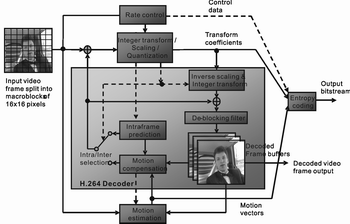
Figure 1 H.264/AVC macroblock video coding layer block diagram
H.264/AVC creates new MPEG-4 features
MPEG-4 Part X H.264/AVC is similar in nature to other standards such as MPEG-2. It consists of a combination of time prediction and spatial prediction combined with code conversion, but this new standard does not replace the current standard. Some MPEG-4 Part 2 "Codecs" are not compatible with them.
In addition, H.264/AVC also uses the latest research in the field of video coding. Thanks to existing advanced technologies such as intra prediction, integer conversion, variable block size motion estimation/compensation and deblocking filtering, H.264/AVC adds new features compared to previous standards, helping others Existing standards can reduce the bit rate by an average of 50% while maintaining the same video quality.

Table 1 Comparison of H.264/AVC with other standards
Inter prediction function
H.264/AVC can be transmitted in one of several coding types according to the coding type of each macroblock, and all the coding types can support INTRA-4×4 and INTRA-16×16. The type of intra encoding. In the previous video coding standards, prediction operations were performed in the transform domain, and in the H.264/AVC standard, this operation is often performed in the spatial domain based on neighboring samples in the coded block. . Intra prediction cannot span slice boundaries to maintain slice-to-slice independence.
Activity compensation in P slices
In addition to the intra macroblock coding type, H.264/AVC also contains a variety of coding types for P-slice macroblocks that are predictive or motion-compensating. The macroblock is partitioned into fixed-size blocks for the active description, and each P-type macroblock corresponds to a particular macroblock partition. The accuracy of the motion compensation is one quarter of the distance of one sample.
In general, the H.264/AVC syntax supports unrestricted activity vectors, ie the motion vector can extend beyond the picture area, but the motion vector component prediction cannot cross the slice boundary.
Integer conversion
In addition, similar to the previous video coding standards, H.264/AVC also uses the prediction of the remaining conversion coding, but this conversion is only applied to 4 × 4 blocks, and the calculation uses 4 × 4 discrete cosine transform (DCT) A separate integer conversion with essentially the same characteristics replaces 4×4 DCT. Since the entire inverse conversion process is defined by an exact integer operation, a good match in the inverse conversion process is avoided. For the quantization of the conversion coefficient, H.264/AVC uses the method of scalar quantization. The quantized conversion coefficients in the block are usually scanned in zigzag order and transmitted using average information volume coding. All conversions in H.264/AVC can be implemented as long as the 16-bit integer values ​​are added and the shift operation is performed on the basis of a 16-bit integer value.

Figure 2 Partition structure of a P. macroblock of H.264
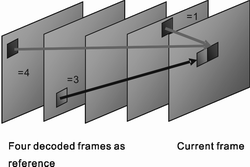
Figure 3 Multi-screen activity compensation prediction
Balanced information coding
To achieve the transmission of quantized conversion coefficients, H.264/AVC uses a more advanced pre- and adaptive variable length coding (CAVLC), which further improves the average information coding compared to a single VLC list only. quality. In addition, H.264/AVC also supports pre- and adaptive binary arithmetic coding (CABAC). Compared with CAVLC, CABAC can save 10% to 15% bit rate when encoding TV signals of the same quality, which further improves the bit rate. Average information volume coding efficiency.
Multiple reference frame
H.264/AVC also supports multi-picture activity compensation prediction. As shown in FIG. 3, H.264/AVC can provide more than one pre-coded picture as an activity compensation prediction reference. However, both the encoder and the decoder must store the reference picture to achieve inter-picture prediction in the multi-picture buffer.
Based on the above advanced technologies, the benefits of H.264/AVC are obvious compared to other existing standards. For example, compared to existing encoding standards such as MPEG-2, MPEG-4 ASP and H.263 HLP, the associated bit rate can be saved when playing DVD-quality TV or HD video encoding using H.264/AVC. 2.25 to 2.5, as shown in Table 1.
AVS creates a new realm of MEPG-4 development
With the development of China's digital audio/video multimedia equipment and system market, in order to establish a national standard for compression, processing and digital copyright management, the Digital Audio Video Codec Standard Working Group (China AVS Working Group) has developed digital audio and video. Codec Standard (AVS) was approved by the Science and Technology Department of the Ministry of Information Industry of China in June 2002. In December 2003, the AVS Working Group developed the first AVS video standard for high-definition and high-quality digital broadcasting, digital storage media and other related applications.
Due to the same modules used, the architecture of AVS and H.264/AVC encoders looks similar. However, considering the backward compatibility of the target application with MPEG-2 and the complexity of decoding, the module in the AVS audio and video codec still adopts a unique technology, which further improves the coding efficiency.
The AVS needs to predict the input macroblock, and the switch S0 shown in Figure 4 is used to select the correct prediction method required for inter and intra macroblocks. Intra prediction is derived from neighboring pixels in the upper left square. Since the 8×8 integer conversion is used, the unit size of the spatial prediction is also 8×8. Inter prediction is derived from the decoded frame and the decoded field. AVS supports blocks of 4 sizes of 16×16, 16×8, 8×16, and 8×8, but in general, high-resolution video rarely uses small-sized blocks. The motion vector accuracy of the AVS inter block is one quarter pixel.
In AVS, the prediction residual error needs to be converted by the 8×8 integer conversion method. The progressive blocks are still scanned in zigzag order, similar to the scanning order in MPEG-2. However, AVS defines a new scanning order in the progressive scan block by adaptive VLC coding technology. The four different types of Exp-Golomb codebooks also correspond to different allocation methods. In addition, AVS also defines some mapping tables that map coding symbols to special encodings and their components.
The total number of predicted and current reconstructed error images constitutes a baseline for reconstruction. AVS uses a deblocking filter in the active compensation loop, which automatically adjusts to the QP parameters based on the block's operation.
Since the MPEG-2 codec and system are widely used in existing broadcasting systems, the syntax structure of AVS is also specifically designed similar to MPEG-2, so it can be directly applied to existing MPEG-2. system.
Currently, AVS supports YUV 4:2:0 and YUV 4:2:2 sampling structures, and 8-bit sample precision. 2-bit unsigned integers for chroma formats are such as YUV 4:4:4 or RGB. Other sequential formats such as 4:4:4 preserve application space.
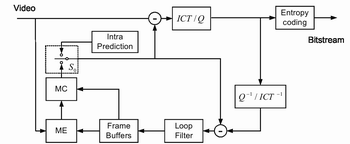
Figure 4 AVS video encoder block diagram
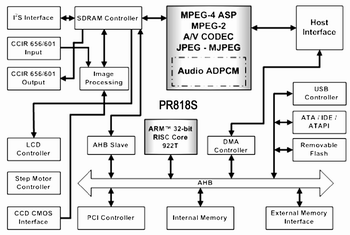
Figure 5 PR8185 single chip solution
The main technology to achieve AVS video standards
Average information coding
First, AVS uses the sequence Exp-Golomb coding table (k=0, 1, 2, 3), CBP, macroblock coding mode and motion vector, and decodes it through the sequence Exp-Golomp coding table. Due to the adjustment of the Exp-Golomp encoding table, the AVS decoder does not need to store these encoding tables. Syntax elements can be decoded using a simple analysis with a selectable lookup table. The 19 mapping tables defined by AVS, although occupying less than 2k bytes of space, are well adapted to different allocations and have high coding capabilities.
Conversion and quantification
Unlike H.264/AVC and MPEG-2, AVS uses 8×8 integer conversion. In order to reduce the rounding error in dequantization and inverse conversion, AVS also has a special program set up, and various operations can be completed in 16 bits.
Intra prediction
The AVS video standard uses intra prediction techniques to improve the macroblock performance of intra coding. Compared to AVC/H.264, AVS defines five modes for 8x8 luma blocks and four modes for 8x8 chroma blocks.
JoyLED is professional manufactuer providing indoor and Outdoor Led Module with different shaps such as V-shape, round shape, bar shape, etc.
1. LED Module Including the Data & Power Cables.
2. NICHIA/CREE/NATIONSTAR gold wires LED lamps, Fast Shipping within 5 working days in 24 hours,Free Tech Support.
3. Led Module Can Work With Colorlight,novastar,linsn,huidu control system etc.

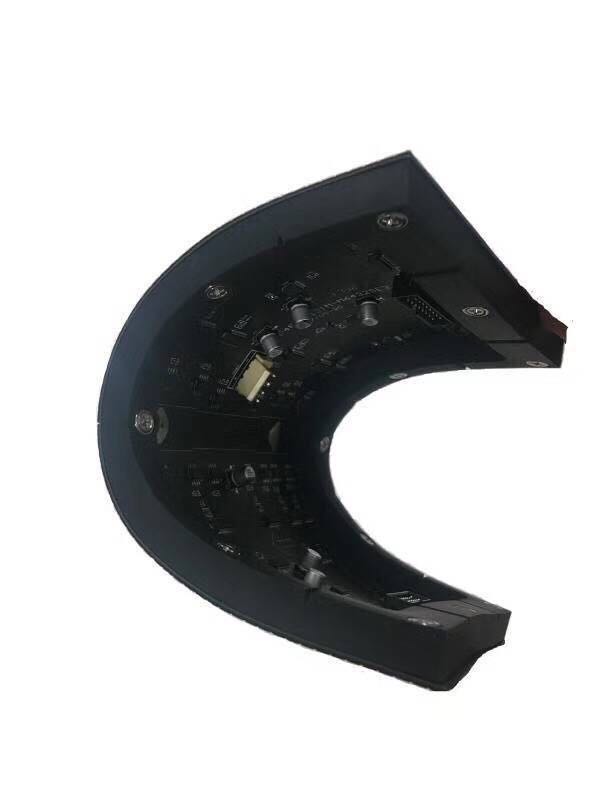
LED Module
Led Module,Flexible Soft Led Display Module,Indoor Circle Led Module,Flexible Soft Led Module
Shenzhen Joy LED Display Co., Ltd. , https://www.joe-led.com